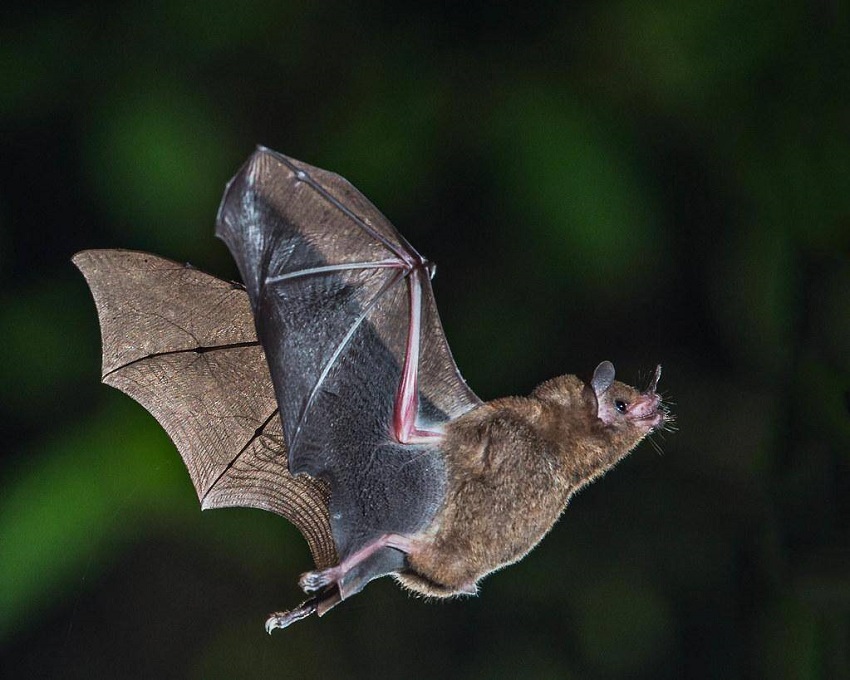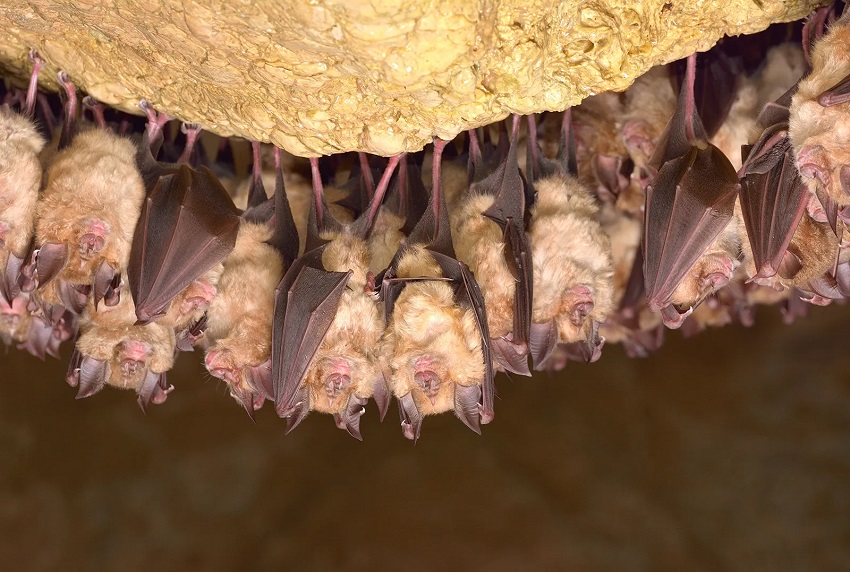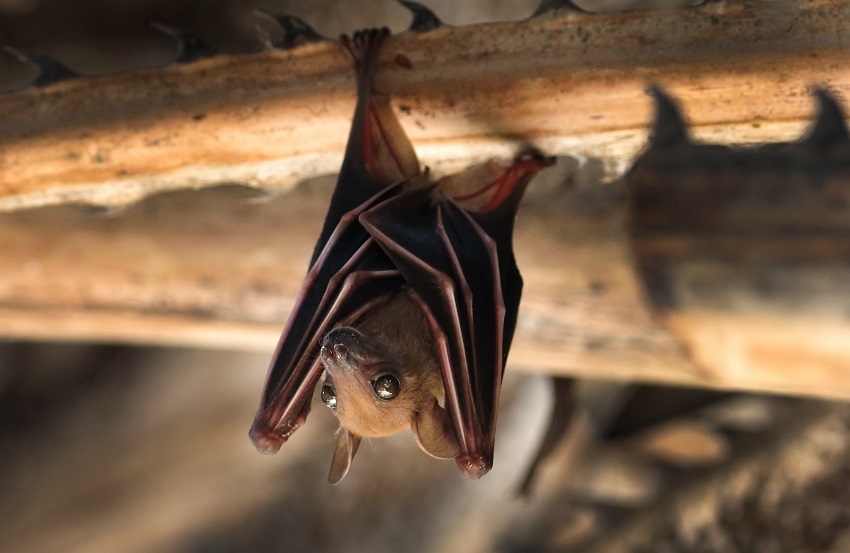Have you ever wondered “Why Do Bats Sleep Upside Down?” and what benefits this unique sleeping position brings to them? If so, join KnowAllAnimals to find the answer in the following article!
1. A Brief Look at Bats
Bats are one of the most unique animals in the world. Besides being the only mammal capable of true flight, bats use echolocation—a system of high-frequency sound waves—to navigate and hunt in the dark, effectively replacing their eyesight.
- Kingdom: Animalia
- Phylum: Chordata
- Class: Mammalia
- Clade: Scrotifera
- Clade: Apo-Chiroptera
- Order: Chiroptera Blumenbach, 1779
All bat species on Earth, numbering about 1,200, are divided into two main suborders: Megachiroptera (large bats) and Microchiroptera (small bats). In addition to their species diversity, bats also vary greatly in size, from the giant Acerodon jubatus, with a wingspan of up to 1.5 meters (5 feet), to the tiny Itty Bitty bat with a wingspan of only 15 cm (6 inches). Most bats are known to eat fruit and small creatures. However, three species in the order are capable of feeding on blood, which is likely why this animal is associated with the vampire image.
Despite their ability to fly, bats are 100% true mammals. Through evolution, they have developed a thin membrane of skin connecting their forelimbs to their bodies, forming a special pair of wings that allows them to take to the sky. Besides their flying ability, bats retain most of the characteristic traits of mammals, especially the feeding of their young with milk.

2. Why Do Bats Sleep Upside Down?
When resting or sleeping, bats always hang upside down, with their heads pointed down, using the claws of their hind feet to hook onto crevices in rocks, walls, or rafters.
If you ever go into a large, rarely-visited cave, you’ll often find hundreds of bats hanging from the ceiling. Large caves are a favorite habitat for bats.
Many bats also like to live in abandoned houses or under eaves. When they rest or sleep, they always hang upside down, with their heads facing down, using the claws on their hind feet to hook into a crevice.
If you were to place a bat on the ground, you would see it crawl awkwardly on its front thumb claws and the five toes of its hind feet until it can climb a vertical tree trunk or wall. Only then can it spread its wings and take flight. So why do bats not rest flat on the ground but instead hang upside down?
When sleeping, a bat’s head-down position with its feet gripping a surface helps ensure a steady flow of blood to the brain and slows down its metabolism. This sleeping posture also allows the bat to make a quick escape when needed.
Unlike birds or insects, a bat’s leathery wings are not strong enough to easily lift it from the ground into the air. Therefore, when resting, a bat always chooses a high-up location. When it needs to take flight, it simply lets go and drops, using air resistance to help it take off.

3. How Do Bats Adapt to Hanging Upside Down?
To adapt to this unique resting position and flight mechanism, bats have evolved a compact size, and their hearts can easily circulate blood even when upside down.
Additionally, to support the large amount of oxygen required for flight, a bat’s heart is exceptionally developed. It’s three times larger than that of other mammals of the same size and has a higher capacity for blood transport. Its right atrium is very large, and when it expands, it can pump a significant amount of venous blood.
While humans and other animals must actively use muscular energy to grip something, bats do not. Their claws are unique in that they don’t require energy to hold on to a surface.
During winter, bats also hang upside down to hibernate. This position helps reduce their contact with the cold ceiling of the cave. Some bats can even wrap their heads and bodies in their wing membranes, and their soft, dense fur provides insulation from the cold outside air.
Naturally, hanging upside down from the ceiling of a cave is much safer than resting elsewhere. This habit and defensive instinct are the results of the animal’s long evolutionary process.
Bats are nocturnal, meaning they are active at night and less active during the day.
Bats sleep and hang in their roosts (tree hollows or caves), which provide shelter and protect them from predators and weather throughout the day.
Bats can hang upside down for long periods, including during hibernation and even after death. Some bat species can hibernate for five to six months and survive on a small amount of stored body fat. Typically, bats become active around dusk and leave their roosts to hunt for food.
However, statistics show that six bat species do not hang upside down to sleep. Most of these have suction cups on their limbs, which allow them to cling to leaves or other flat surfaces for rest.

4. FAQs
1. Why do bats prefer to sleep upside down?
Bats sleep upside down because it allows them to take flight more easily, as their legs are not strong enough to launch from the ground.
2. Do bats ever sleep right side up?
No, bats almost always roost upside down, although a few species may rest in crevices or under leaves.
3. How do bats hang upside down without falling?
Bats have a special locking tendon mechanism in their feet that lets them grip surfaces tightly without using much energy.
4. Is sleeping upside down dangerous for bats?
No, it’s perfectly natural. Their circulatory system is adapted to handle the position without causing harm.
5. Do all bat species sleep upside down?
Most species do, but some like fruit bats (flying foxes) may use tree branches differently, still hanging but sometimes in clusters.
For bats, hanging upside down isn’t just a unique habit—it’s a crucial survival strategy that allows them to take flight easily and rest safely. A bat’s body is perfectly evolved to adapt to this position without any harm to its health. Understanding this behavior helps us appreciate the wonders of nature and the incredible biodiversity on Earth.
We hope this article from Know All Animals has answered your questions about “Why Do Bats Sleep Upside Down?” and how they can adapt to such an unusual sleeping style. Thank you for reading.



